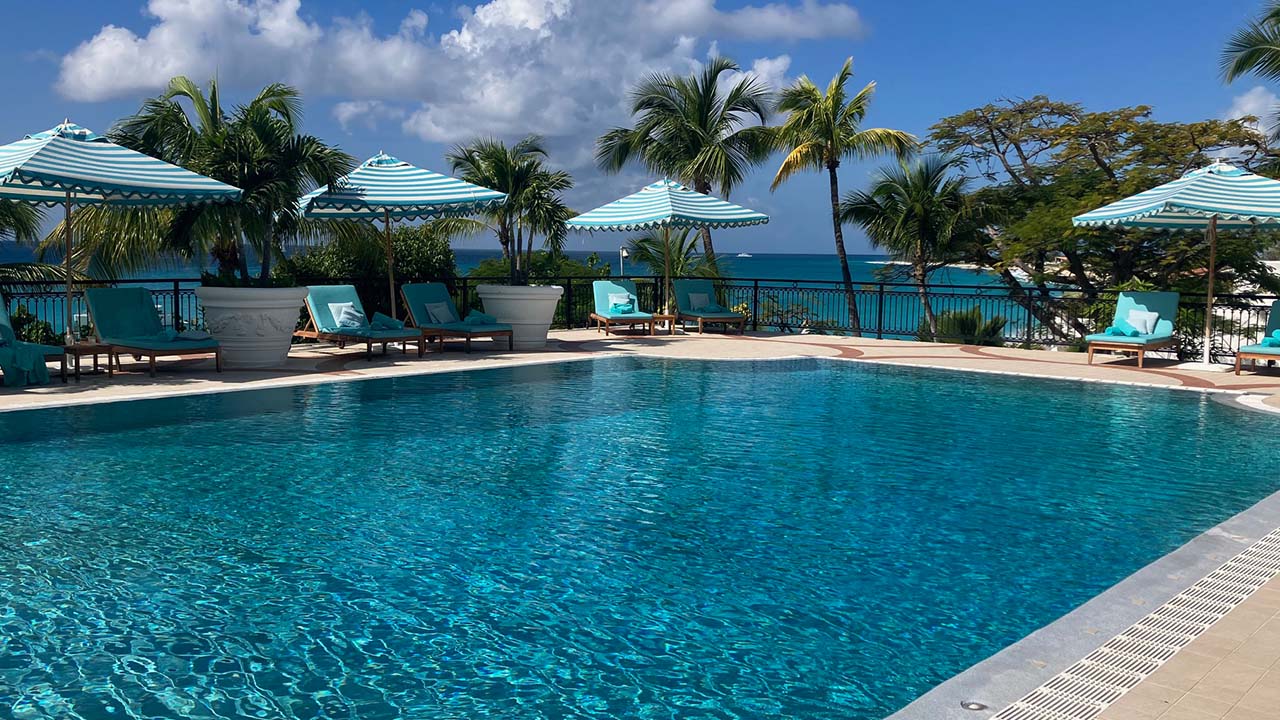I’ve been going to St. Martin for decades. The first time I visited, it was possible to drive around the perimeter of the dual-nation island—French in the north, Dutch in the South (where the territory is called Sint Maarten)—and see most of it in half an hour. It wouldn’t take long to make it from Marigot, the main town on the French side; to the picturesque coves of Happy Bay and Friar’s Bay; and over to the island’s east side, starring the famed crescent of Orient Bay; then skirt the Dutch side, ending up in the yellow rock ledges of Cupecoy Beach. There was always lots to occupy the eye, from the verdant hills, to the island’s vast interior lagoon, to the cute boulangeries by the side of the road.
Major development came to St. Martin/Sint Maarten after the turn of the century, which is no surprise, since the island boasts some of the Caribbean’s loveliest and most varied beaches, with clear, swimmable water the color of cyan. There’s more traffic now, and it takes a lot longer to explore, and even the beautiful, once-untouched coves of Cupecoy are now in the shadow of condo buildings and hotels.
But the small marina, cafes and patisseries of Marigot are still worth a look, Orient Bay continues to deliver a spectacular beach experience (for swimming, watersports, dining and people-watching), and one more thing hasn’t changed—that’s the primacy of La Samanna. There’s nothing on the island that even approaches the caliber of this Belmond-managed resort; you’d have to go to St. Barths or Cap Juluca (another Belmond property) in the neighboring island of Anguilla to match this level of refinement.
La Samanna’s position doesn’t hurt—its 55 beachfront acres are located on the island’s remote western peninsula, on Long Bay, a gentle curve of pristine sand that extends for more than a mile. The hotel, which reopens on November 15 (many top Caribbean hotels close their doors for a freshening up during the summer off-season), is celebrating its 50th anniversary this year, and it hasn’t rested on its location or its laurels: the property’s most startling change was the addition of a cluster of eight three- and four-bedroom villas on a dramatic rocky promontory overlooking the beach.
Returning guests staying in the main hotel will immediately notice a facelift that was completed before the pandemic. The architectural landscape—a line of whitewashed buildings, each one containing several rooms and suites (83 accommodations in total)—remains the same, with arches and columns to mark it as discreetly European. Aside from the clifftop villas, in the past half-century the most prominent enhancement to the facilities has been the addition of a beachside infinity pool, which links to a teak lounging deck and a restaurant—Laplaj—so seamlessly that this pocket of the property has the quality of a private beach club on the Côte d’Azur. While the sun is out, Laplaj is the place for a salade niçoise and an aperol spritz; at night, the open-air space becomes La Spiaggia, by Laplaj, an Italian trattoria serving grilled branzino and linguini with Caribbean lobster.
The charm of this more recent aqueous amenity does nothing to slight the hotel’s sublime original pool, which occupies a prime position lording over the beach and just steps below Corail, La Samanna’s breakfast spot (where the piña colada French toast with pineapple compote, toasted coconut, rum-caramel sauce and mascarpone is not to be missed).
This pool deck is more in the traditional French Riviera style, with scalloped edges and aquamarine lounges, towels and umbrellas that perfectly match the sparkling water. All the soft goods that are blue here are splashed a festive pink down at the infinity beach pool. Whatever suits your mood. Color me happy—and pampered—either way.














